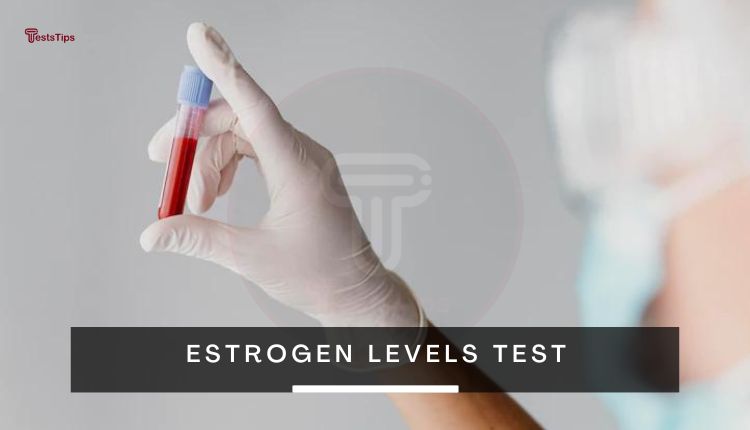Estrogen test – what is it? How to do a test?
Estrogen Levels Test
The estrogen test is an easy way to determine if you have low levels of estrogen or high levels of progesterone. Find out more about this test here!

Table of Contents
What Is an Estrogen Test?
An estrogen test is a way for your doctor to measure the level of estrogen hormones in your blood or urine. Estrogen is a vital hormone that plays an important role in sexual development, fertility, and menopause. Estradiol, estriol, and estrone are the three main forms of estrogen that are typically measured with this test. An abnormal level of any one of these hormones can indicate certain health conditions, such as infertility or early menopause. Estrogen testing can also help doctors diagnose and treat conditions like polycystic ovary syndrome (PCOS) and endometriosis.
Reasons for Testing Estrogen Levels
Estrogen is a critical hormone for women’s health and is involved in a variety of bodily functions, including reproduction, bones health, and heart health. Testing estrogen levels can help identify imbalances or medical conditions.
An easy-to-read blood test is available to measure the three main types of estrogen: estrone (E1), estradiol (E2), and estriol (E3). Estradiol testing can be used to diagnose specific diseases while an estrogen test alone cannot diagnose any particular condition. Urine hormone tests may also be used to detect the presence of estradiol metabolites in urine, which can give an indication of E2 blood levels.
Estrogen testing should be done when there are signs of high or low levels, during pregnancies, if menstrual cycles are irregular, or if other hormonal imbalances are suspected. It is important to consult with a doctor before undergoing any sort of hormone testing in order to determine the best course of action for you.
Preparing for the Test

Preparing for an estrogen test is easy, as no special preparation or fasting is required.
How to Collect a Sample
Estrogen testing is a useful tool for helping to diagnose and treat various medical conditions. In order to obtain a sample for an estrogen test, you will need to visit a lab or health care provider.
At-home blood tests are the most common way of collecting a sample. The process is quick and easy, requiring only a finger prick and the collection of a small amount of blood. Urine tests are another popular option, where you collect a sample that is then analyzed for hormone levels.
An estrogen test measures the levels of one to three forms of estrogen: estradiol, estriol, and estrone.
An alternative method for obtaining an estrogen test involves saliva using at home test kit which is convenient, inexpensive, and above all accurate if done properly. It measures the same hormones as in blood or urine samples: estradiol, estriol, and estrone. The procedure involves collecting saliva using special swabs that can be purchased online or from health care providers.
“Related: BCR ABL1 Test; Purpose and test result“
Understanding Results of the Test
An estrogen test measures the level of estrogen hormones in the blood or urine. This test can help identify imbalances in estrogen levels which may be linked to various medical conditions.
Your test results will mean different things depending on:
- Age
- Gender
- Reasons for having the test
- The type of estrogen that was measured
If your test results show low or high levels of estradiol, a doctor may recommend further testing to diagnose any underlying conditions.
If you’re having difficulty understanding your results, it’s important to talk with your doctor about them so they can provide more information and guidance on how best to interpret them correctly. They may also suggest a course of treatment depending on the outcome of the test results and any other tests that have been performed previously.
Normal Range and High Levels of Estrogen
Estrogen tests measure levels of the hormone estrogen in the body. Estrogen is a major female sex hormone that is responsible for the development and maintenance of reproductive organs, secondary sexual characteristics, and bone health. It also plays an important role in fertility and pregnancy.
- The normal level of estradiol for menstruating women is usually between 15 to 350 mcg/dL.
- For perimenopause women, normal levels of estradiol (the most potent form of estrogen) range from 30-400 pg/ml.
- For post-menopausal women, normal levels are much lower at 0-30 pg/ml.
- For men, it’s usually between 10 to 50 pg/mL or 36.7 to 183.6 pmol/L.
Elevated estradiol levels can be a sign of various conditions including:
- Ovarian cancer
- polycystic ovary syndrome (PCOS).
- Indicate that a person is not ovulating.
- Check for puberty onset in young girls or to monitor fertility or menopause in women.
Risks Associated With Testing Hormones
A blood test is extremely safe. Minor pain or bruising may occur where the needle was inserted, but most symptoms will pass quickly. There are no known risks associated with a urine or saliva test.
Conclusion
Estrogen plays an essential role in maintaining women’s reproductive systems. However, too much estrogen can cause serious health issues such as breast cancer, endometriosis, and uterine fibroids. By checking your estrogen test regularly, you can take steps to prevent these conditions.
